Memories are complicated affairs. “I don’t know where family stories and my memory overlap,” confides Reuven Gnagnatti in the 2016 documentary Shalom Italia. And he’s not alone. For as our memories fade, they intermingle with family tales, old photographs, and things we have heard or read, to the point where we’re not quite sure whether we remember something or not.
Just ask Hal Walker, who, when asked when he picked up his first harmonica, instinctively replies that it was in third grade.
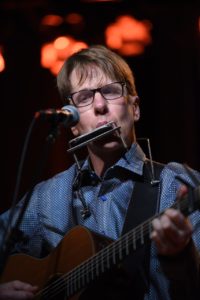
And then again, maybe not, as he immediately qualifies his answer by saying that that “fact” is more of a family folk legend than an actual memory.
He says his first real memory goes back to a Christmas gathering at his Aunt Robina’s house a few years later. “She was my grandmother’s sister,” he says, “and we were always asked to share talent at the family Christmas party. And that’s the first time I can remember playing Amazing Grace on the harmonica.”
Hal’s music has taken several turns since then, but every now and again you’ll find a little something that takes him back to his religious roots, like this happy little tune from his latest album.
Hal’s first harmonica was an Echo harp and, while he picked it up every now and again, it wasn’t until he entered Northwestern University that the harmonica became an important part of his life. “I would ride my bike or take the train into Chicago and make sure I had my harmonica with me,” he recalls. “And I would walk down the street improvising.”
When asked what he majored in at college he quips, “I studied ultimate frisbee.” The statement is followed by a pause, after which he says. “Well, not really. I was a history major, a terrible history major, barely worth mentioning because music was my passion.”
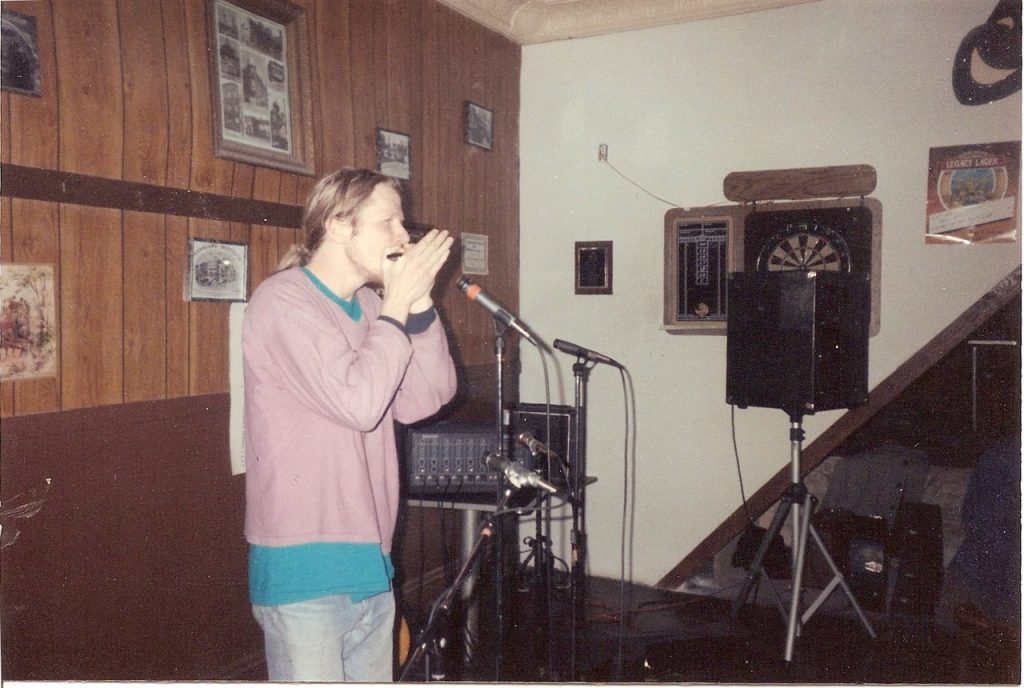
It all came together in his freshman year when someone in his college dorm introduced him to Neil Young’s Live Rust album and a tune that would change his life’s focus. “I fell in love with Sugar Mountain,” he says, “and that’s when I decided that that was what I wanted to do.”
Walker had studied the piano for more than a decade and was anxious to learn how to play the guitar. But, after hearing Sugar Mountain, his desire to learn more about the harmonica kicked in. Did that change of heart result in a change of major? Says Walker, “I didn’t know that becoming a professional musician was an option at the time. I just knew that I wanted to play music.”
But Hal allows that his interest in the harp wasn’t completely about the instrument, freely admitting that, like so many young men, his main motivation in learning to play was to attract women. “I played the guitar and harmonica to prove that I was somebody,” he says, “that I was worthy.”
Walker’s quest to learn more about the harmonica took a major turn in 1985, when he bought a copy of Jon Gindick’s Harmonica for the Musically Hopeless. “I started learning those blues riffs,” he recalls, “and that was the beginning of my harmonica career.”
Before long, Walker was performing on stage at various open mics: “And pretty quickly I was pretty good and could play the solo harp and really impress people.” The key to his success? Hal believes it had everything to do with the fact that there was something different about the way he played the harmonica. “I played it as a solo instrument.”
What kind of music was he playing? Another quip: “It was music to walk down the street with.” And another pause. “I was improvising. I was making it up. There were several styles. They might have had a country, folk or bluesy feel.”
But, as Walker is not one to put all of his musical eggs in one basket let alone two or three, that’s about as far as he’ll go. “I’ve never really been too interested in labels or categories,” he says, “because most of my music is original.”
And, we would add, often, deeply personal, like the song Hal wrote in memory of his Dad, who passed away in June of 2017.
But if Hal’s music didn’t fit into any one particular genre, a gift he received in his junior year at Northwestern helped hone his style. “I had a crush on this woman and spent the entire year giving her very passionate harmonica lessons. She never returned my interest, but she gave me a minor-key harmonica at the end of the year. And that became one of my styles ─ to play the harmonica in a minor or gypsy.”
“I also got a taste of how to teach the harmonica that year,” he says, and found that he liked teaching ─ a lot.
After graduating college in 1988, Hal moved back to Ohio, where he has spent the last 30-plus years working as a professional musician.
Much of his work has involved teaching youngsters through programs like the Ohio Arts Council’s Arts Learning program, and, over time, he’s developed a very specific system of teaching using hand motions.
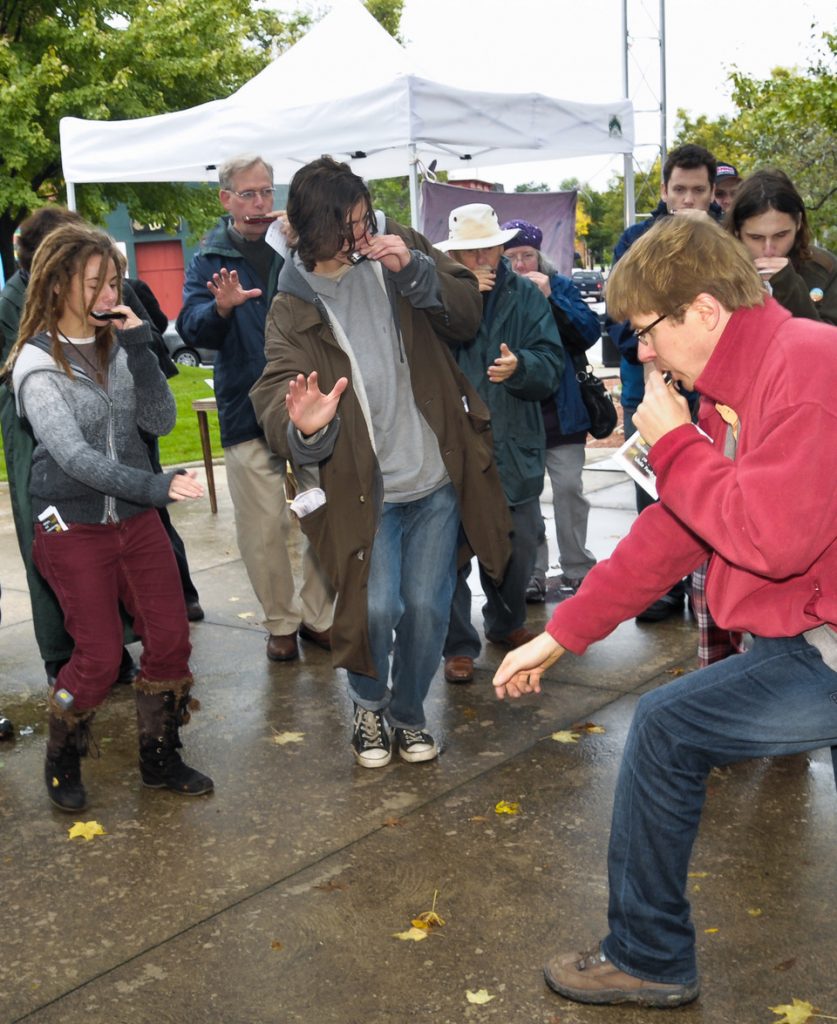
Hand motions?
Hand motions. Says Hal, “Before they ever pick up a harmonica, they learn the push and pull of their arm motions and the push and the pull in their breath. So, from the minute I walk into the classroom, they’re moving their bodies and having a fun time pushing and pulling air.”
Over the years, Hal has refined the process to the point where he says he can walk in and, within a few lessons, have the whole school creating music on the harmonica.
Contrary to what you might think, Walker says that, while children have the patience to learn these basic techniques, adults often want to skip the fundamentals and go from zero to hero in a hurry. They want to learn riffs. Which is why Walker designed a program that marries the “want” and the “need”, as seen in the following video.
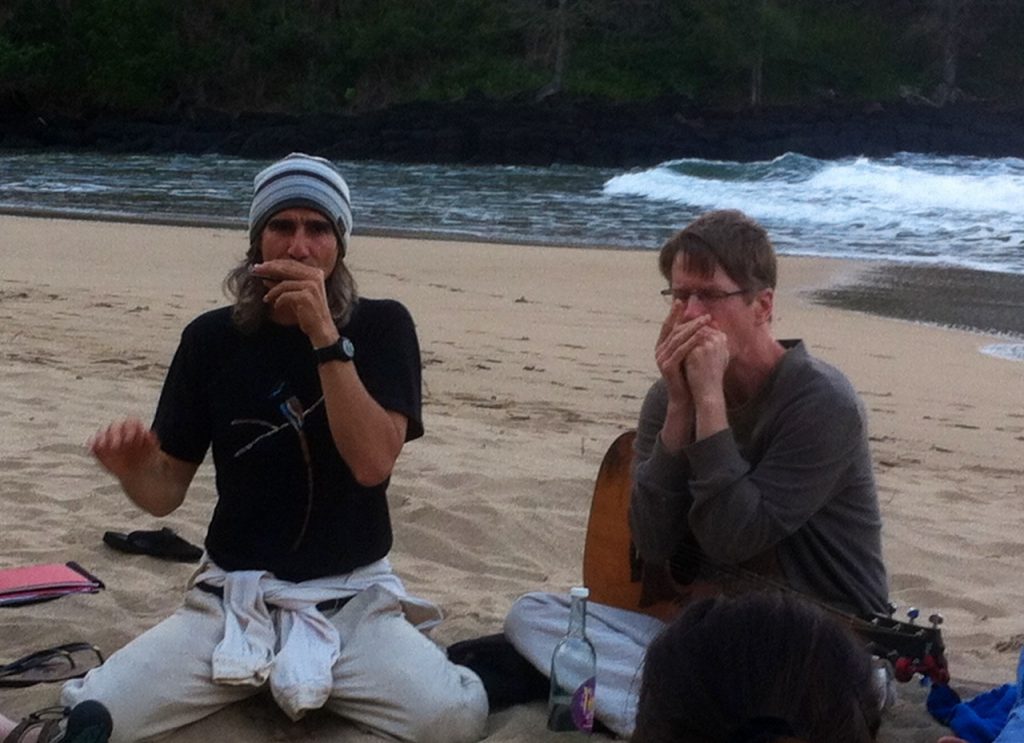
It doesn’t take long to realize that Hal Walker is a born teacher, and students find that his enthusiasm is contagious. While most of his adult lessons take place online, at conventions or as part of a symposium, like his inter-active TEDxAkron talk “Harmonica for the People”, he’s taken a couple of memorable turns teaching the fundamentals at JP’s Hawaii-based Harmonica Retreats.
He’s also put together a large number of teaching videos that can be found right here on our website as well as on YouTube.com.
Many of Hal’s videos find him interviewing and jamming with some of the world’s most admired harp players, such as the one seen earlier with Jon Gindick, and this one with Joe Filisko.
But, no matter how you get to know the multi-talented Mr. Walker, it won’t take you long realize that whether he’s teaching, having a chat, or performing, his sense of humor and discovery shines through.
This is especially evident when it comes to exploring the possibilities of playing just about anything, including one unlikely ‘instrument’ that generally hangs out in a catch-all drawer in the kitchen until Thanksgiving.
But Hal Walker’s musical explorations extend far beyond the kitchen cabinet, as he tracks down and picks up any number of different instruments, including the generally-unknown melodious khaen. It is, he says, his favorite instrument, and “the grandmother of the harmonica”.
Back in 2007, Hal traveled with ethnomusicologist Terry Miller to the remote villages of northeast Thailand to find the makers of the instrument. Miller, a professor at Kent State, had been studying the music of the region for more than 30 years.
As you might suspect, the khaen is one of those instruments that isn’t churned out in large quantities at big-city factories. Rather, they are made by “individual guys sitting in towns with no running water and electricity making instruments out of bamboo”.
Walker brought several of the instruments home with him and set about learning how to play them. As he had mentioned that the khaen was the grandmother of the harmonica, we were curious as to what they had in common. The answer? Says Mr. Walker: “Within each bamboo reed are embedded tiny brass harmonica reeds. There are sixteen pipes and each pipe has one reed.”
But does the khaen sound like the harmonica ─ or vice versa ─ seeing as how the khaen’s beginnings predate the harmonica’s?
Walker has obviously been asked this question before. “It’s got a miraculous, mysterious sound,” he says, “a sound like most people have never heard.”
Could he be a bit more specific? “It sounds like an accordion,” he replies, with a qualifying, “and sometimes like a trumpet. But it’s more usually identified (described as sounding like) as an accordion but played by the breath. But it’s definitely related to the harmonica. It’s a mouth organ; it even looks like an organ.”
What will the ever-inquisitive Mr. Walker look into next? While there’s no telling, one thing is certain: Hal Walker is a teacher who enjoys learning; whether it be about an obscure instrument made halfway around the world, or the 10-hole diatonic that he carries in his pocket. He’d always been a diatonic guy who didn’t own a chromatic, and never really thought about owning one. And then, in 2010, while at the Buckeye Harmonica Festival in Akron, Ohio, Hal heard a harmonica quartet for the first time. Intrigued, he introduced himself to the group and enjoyed a happy conversation with two of its members, chromatic wizards Al and Judy Smith. The couple invited Walker to stop by their home.
It was on that first visit that Al lent Hal a chromatic and sent him home with a couple of charts to work on. “And, right away, I started reading the music he gave me,” recalls Walker. It was, as Bogart would say, the start of a beautiful friendship, as one visit became two, and then three, until it was a weekly thing.
“I had the great honor of playing lead with Al and Judy,” Hal recalls. “And we found a great bass harmonica player. But, unfortunately, I had some health challenges that took me away from that, but I fondly remember those years playing with them and hope to get back to playing with them on a regular basis.”
Not long after our interview, Hal called to say that our conversation had led to his calling and visiting the couple, picking up where they had left off, and having a grand time. “We played harmonica together. I got out my chromatic and we got out the old songs that we used to play as a group.” Good times. Good friends. Good music. And the promise to get together once a week and do it all again. And again. And again.
It was at one of the friends’ first get-togethers that Hal gave a friend some pointers on how to get the most out of harmonica hole number three. He recreated that lesson in a later post.
But, if you only know Hal as a teacher, harmonica player, guitar picker, or interviewer, you need to take some time out to listen to his words, melodies and the rhythms that bind them.
Between teaching, writing and performing, Hal has managed to produce two CDs: 2010’s Home in Ohio, and 2017’s Life Wonderful, both of which are available through CD Baby.
This latest album was written and recorded as an expression of gratitude after surviving a near death experience. And, like most of the songs Hal writes, the album is filled with original tunes that “celebrate community, diversity and the creative process”.
The more you listen to Hal’s music, the more surprises you find tucked inside the various arrangements, from Jew’s harp to concertina, there. From Thailand’s melodious khaen to the clickity clack of an African banakula, nothing is off limits, which is why it’s hard to define Hal’s music. And that’s just the way he likes it.
While this singer, songwriter and performer has done many things in his career, he will tell you flat out that it is his work as a teacher that he believes is his greatest accomplishment. “It’s been one of my signature contributions,” he says, and you can hear the pride in his voice. When asked if he expects his young charges to go on to carry a harp in their pockets, as he took to doing back in his college days, he says, “My hope is that in a very short time I will lay a foundation for a lifetime of playing. Many of these kids have a very memorable experience, but who knows what they do with it.”
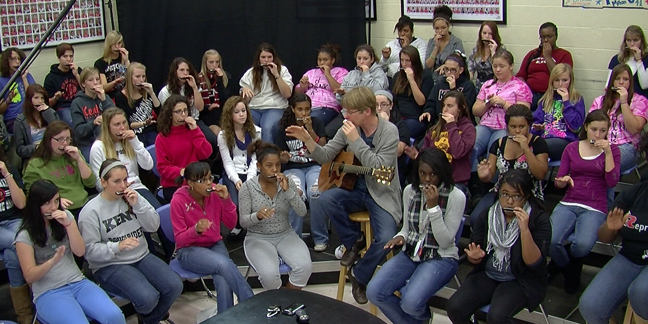
Does he hear from his former students? You know, the little ones, who were first introduced to the harmonica the day Hal Walker walked into their classroom, passed out enough diatonics to put one in every child’s pocket in the classroom some years before.
“Interestingly enough,” he says, “I just got an email from someone who was just graduating high school. She wrote that one of her fondest memories was playing the harp in kindergarten. It was a great email.”
Kindergarten? Perhaps you’re never too young to pick up the harmonica and put it in your pocket. Is there a perfect age, a time when a child is ready and primed to learn? Hal says that by the time a child reaches the end of second grade or the beginning of third, he or she is ready to follow his lead, beginning with those signature hand motions. But he says that he enjoys the challenges and rewards that come from teaching students of all ages, believing that, if the mind is willing, it’s always the right time.
For more harmonica lessons plus information on Hal Walker and his music, check out the following websites:
BreakThrough Blues (Hal contributed a bonus video lesson on the topic of “Combining Rhythm and Lead Harmonica“)

Comments
Got something to say? Post a comment below.